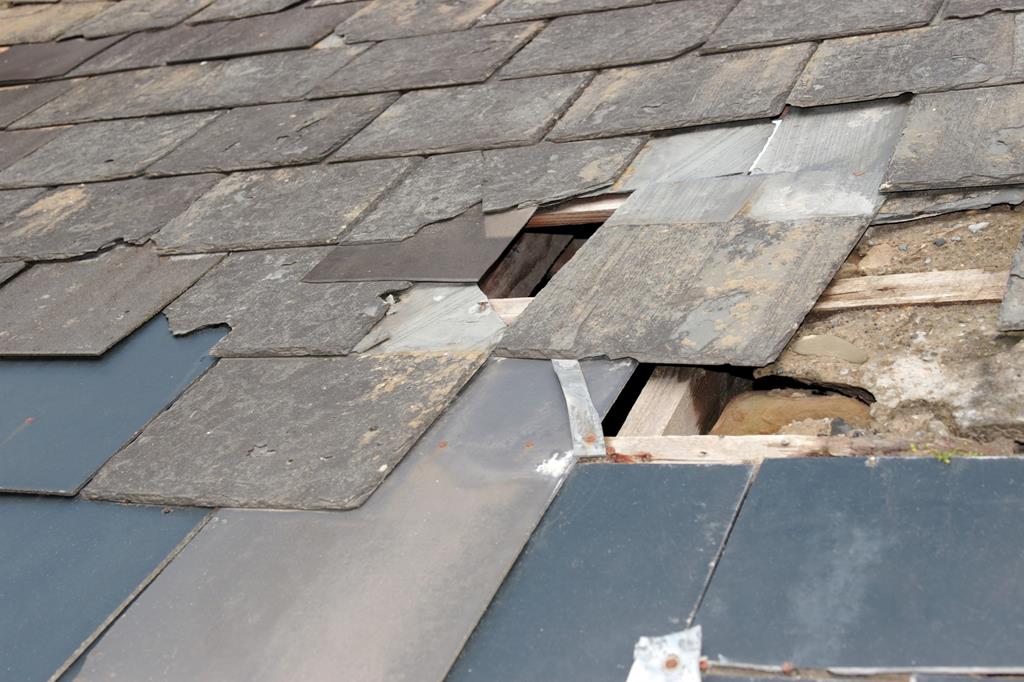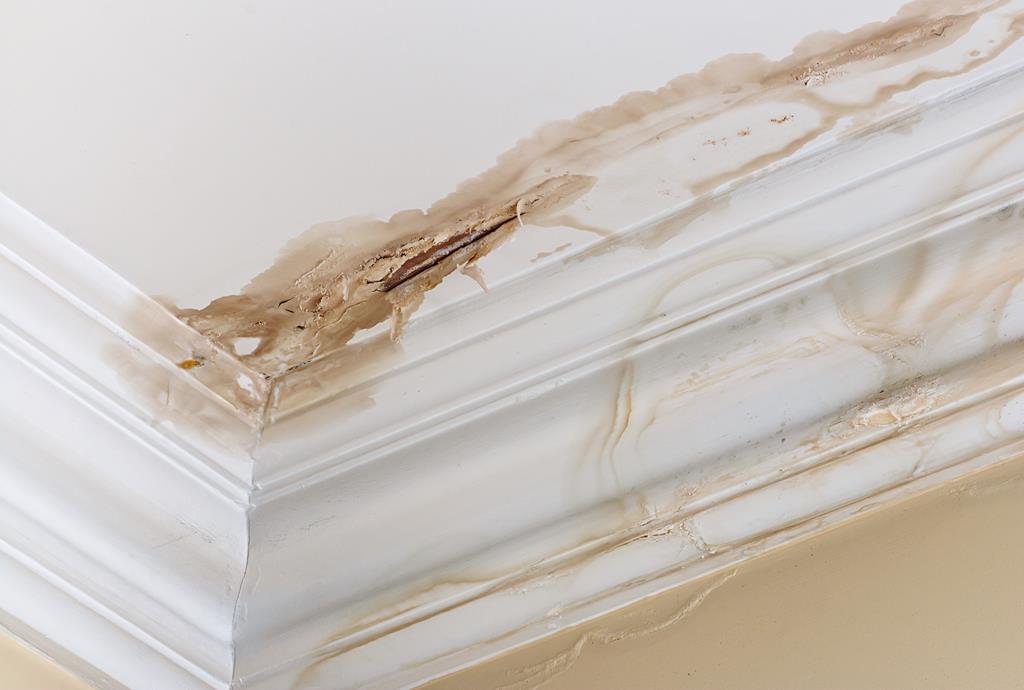We occasionally experience some extreme weather in the Central Texas Area. Heavy thunderstorms and hail are usual occurrences in this area. You may wonder after a storm has blown through your area if your home has suffered any damage. Loose or damaged shingles can become airborne at wind speeds between 19 and 24 mph, according to the National Severe Storms Laboratory. Gusts of wind between 39 and 46 mph can even snap healthy tree limbs, resulting in potentially serious property damage. As wind speeds rise, so does the potential for damage to structures and buildings. Wind speeds between 55 and 63 mph can uproot trees and cause significant destruction to structures of various sizes.

Signs of Storm or Hail Damage
You don’t always have to climb onto your roof to find signs of roofing damage. There are several signs of damage that can be noticed in other ways. Take a walk around the perimeter of your home look for the following:
- Yard and/or property damage – do you see damage to the trees, bushes, or exterior structures like your mailbox or a patio pergola? Did any vehicle parked outside sustain damage?
- Clogged gutters – Storms and wind can blow debris into your gutters. Branches, twigs, leaves, and other debris can become lodged there and prevent water from draining properly.
- Presence of shingle granules – do you see an accumulation of asphalt shingle granules in your yard and/or around your landscaping? Asphalt shingles have granules to protect them from UV rays while making them more water-resistant.
- Broken, cracked, and missing shingles – do you see shingles lying on the ground around your home? When looking at your roof, can you see where shingles are missing, or where the shingles are damaged, curling, torn, or cracked?
Hailstorms can also strip granules off of roofing shingles. See if you noticed any spherical (ball shaped) indentions in your roof. (Be safe – please do not go out on your roof to look – leave that to the professionals!) Why are these indentations a cause for concern? Because dents can form into cracks, letting water though to soak in and do further harm over time. Check other structures and any vehicles on your property for further signs of damage.
Signs of Storm Damage Inside Your Home
You may see indications of damage to your roof from inside your home. Do you can see dark or wet spots on your ceiling or walls? That is a clear indication of a problem! You may also find wet spots near plumbing, toilets, faucets, and sinks, or notice a musty, rotting, or foul smell. Damp areas on the floor or drywall that is cracking, or flaking are other signs that your home has experienced some damage.
Any dripping, water stains, wet insulation, water accumulation in the attic, including the under the sheathing or roof, are serious indicators that a storm has caused damage.
It is critical to check infrequently used areas like the attic for more signs. Any dripping, damp framing, water stains, wet insulation, water accumulation in the attic, including the under the sheathing or roof, are serious indicators that a storm has caused damage.
Take Notes
After an intense storm, make sure to make notes and take photos as soon as you safely can. These pieces of evidence can be a huge asset when handling insurance claim. Having sufficient notes and photos will make things go much smoother.
Your insurance company will inform you on your next steps, but they will include finding a reputable contractor to rebuild the damage to your home. Finding a trustworthy company with experience will bring you and your family with peace of mind. Modern Blu Austin is a full-service home improvement company that has been committed to providing our clients with quality home renovation and repair services for over 20 years.


